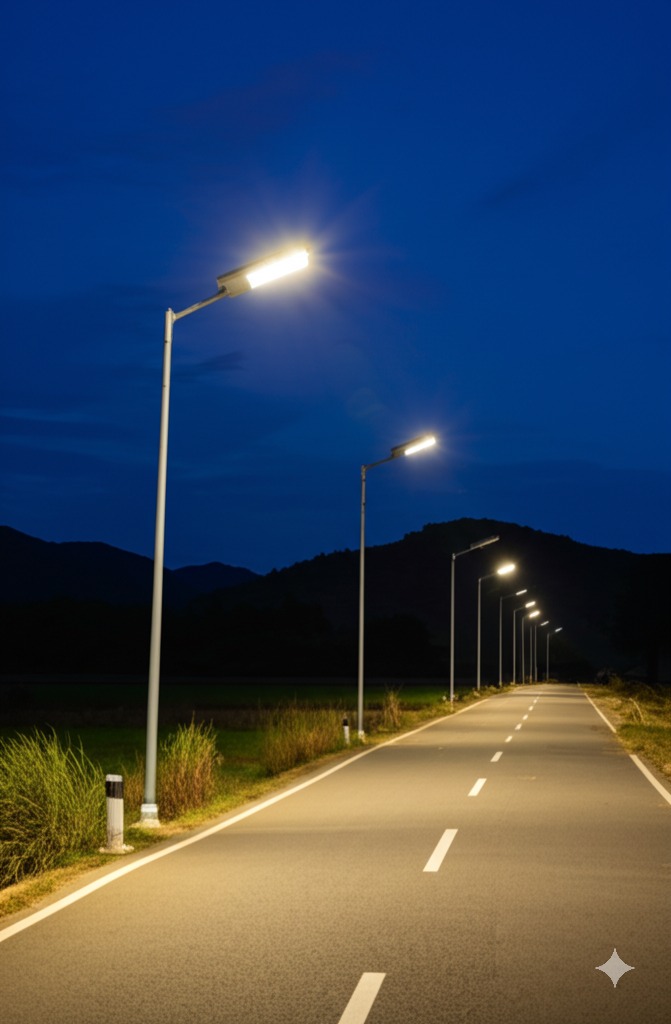Many cities and property owners hesitate to switch to solar street lighting because of the upfront costs. But are you missing out on long-term savings and environmental benefits?
**Yes, solar street lights are worth it for most applications because they pay for themselves in 3-5 years through energy savings, eliminate electricity bills, and reduce long-term maintenance cos
Switching to solar lighting can be a smart choice, but let’s break down how they compare to traditional lights and where they perform best.
How Do Solar Street Lights Save Money?
Governments and businesses often assume solar street lights are expensive to install. However, the long-term financial benefits often outweigh the initial investment.
Solar street lights save money by cutting electricity bills, requiring almost no underground wiring, and reducing maintenance costs—no bulb replacements needed for LED fixtures.
Breaking Down the Cost Benefits
When comparing solar to conventional street lighting, several factors make solar a cost-effective solution:
No Electricity Bills
Traditional lights consume power 365 nights a year. Solar lights run on free renewable energy.
Minimal Infrastructure Costs
Solar lights need only a sturdy pole and foundation.
Traditional lights require: Underground wiring (~ $20-$50 per foot), Utility connections (~ $500-$1500 per pole)
Lower Maintenance Expenses
LED solar lights last 50,000-100,000 hours—no frequent bulb changes.
No cable damage or outages from external power issues.
| Factor | Solar Street Light | Traditional Street Light |
|---|---|---|
| Installation Cost | $500-$2000 per light | $2000-$5000 per light (includes wiring) |
| Lifetime Energy Cost | $0 | $500-$1500 per light (10-year estimate) |
| Maintenance Needs | Very low (battery replacement every 5-7 years) | Higher (bulb replacements, wiring issues) |
What Are the Best Uses for Solar Street Lights?
Solar lighting isn't ideal for every situation. But for certain applications, they outperform conventional lights in both cost and reliability.
The best uses for solar street lights include remote locations, off-grid areas, parks, parking lots, pathways, and rural roads—places where grid power is unreliable or too expensive to install.

Key Applications Where Solar Lighting Shines
If you're considering solar lighting, these are the top scenarios where they excel:
1. Off-Grid & Remote Areas
No need for costly power line extensions.
Ideal for villages, farms, and highways with no electricity access.
2. Temporary or Emergency Lighting
Quick to install—perfect for construction sites, disaster relief, and event venues.
3. Parking Lots & Walkways
Lower ongoing costs and bright, consistent lighting for security.
4. Municipal & Smart City Projects
Many cities use solar street lights with motion sensors to save even more energy.
What Are the Possible Downsides?
Solar lighting seems perfect, but some limitations exist. Are these deal-breakers, or can they be managed?
The main drawbacks of solar street lights are higher upfront costs, potential reduced performance in winter, and battery replacement needs—but these issues can be minimized with smart system design.

Addressing Common Concerns
Upfront Cost
Although solar lights cost more initially, they become cost-effective within a few years.
Winter Performance
Advanced solar panels still work in cold climates but may need slightly larger batteries for efficiency.
Battery Replacement
Lithium-ion batteries (5-7 year lifespan) now replace old lead-acid batteries (3-5 years).
Conclusion
Solar street lights are worth it for most outdoor lighting needs, offering long-term savings, reliability, and environmental benefits with minimal maintenance.

